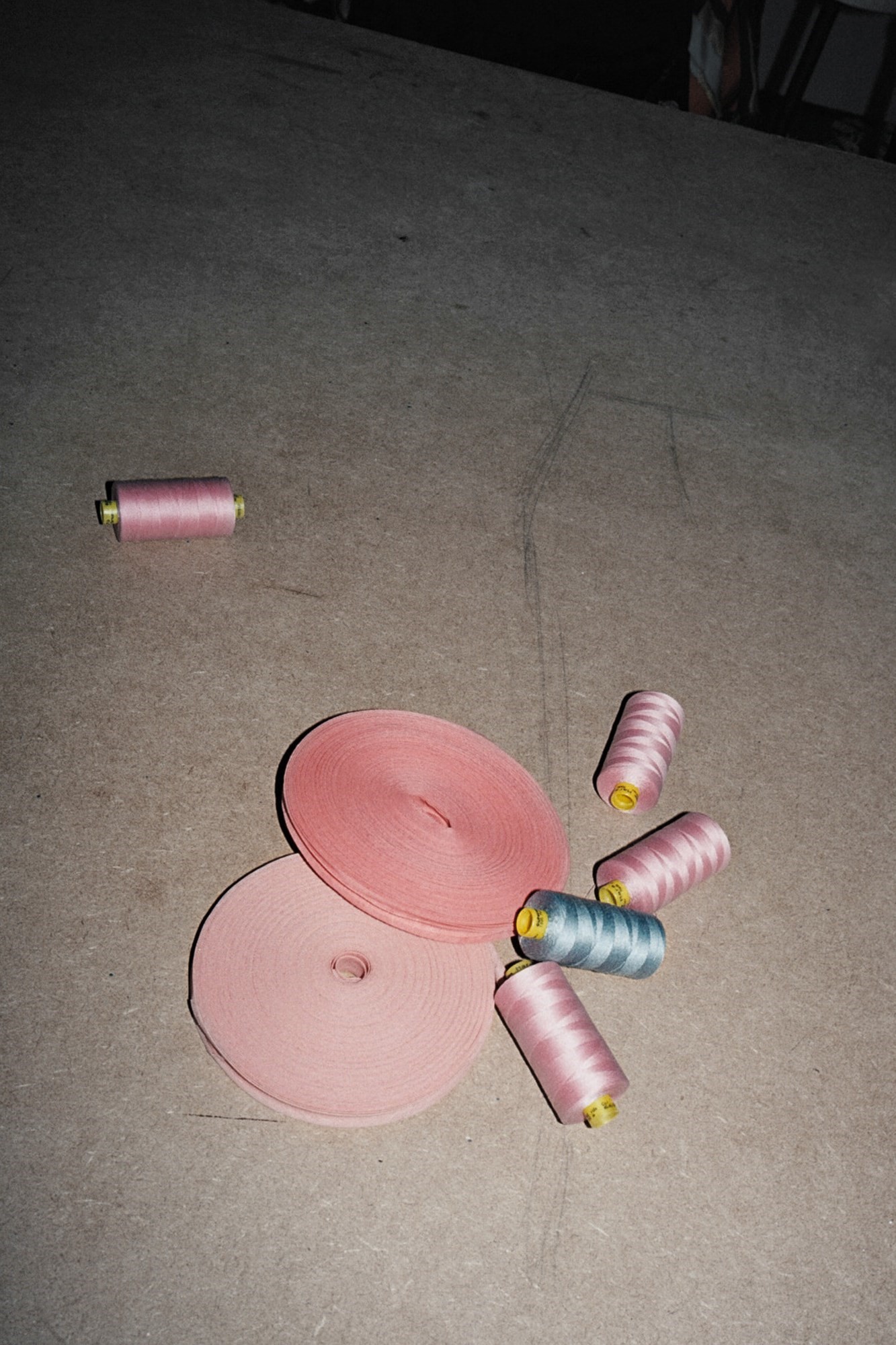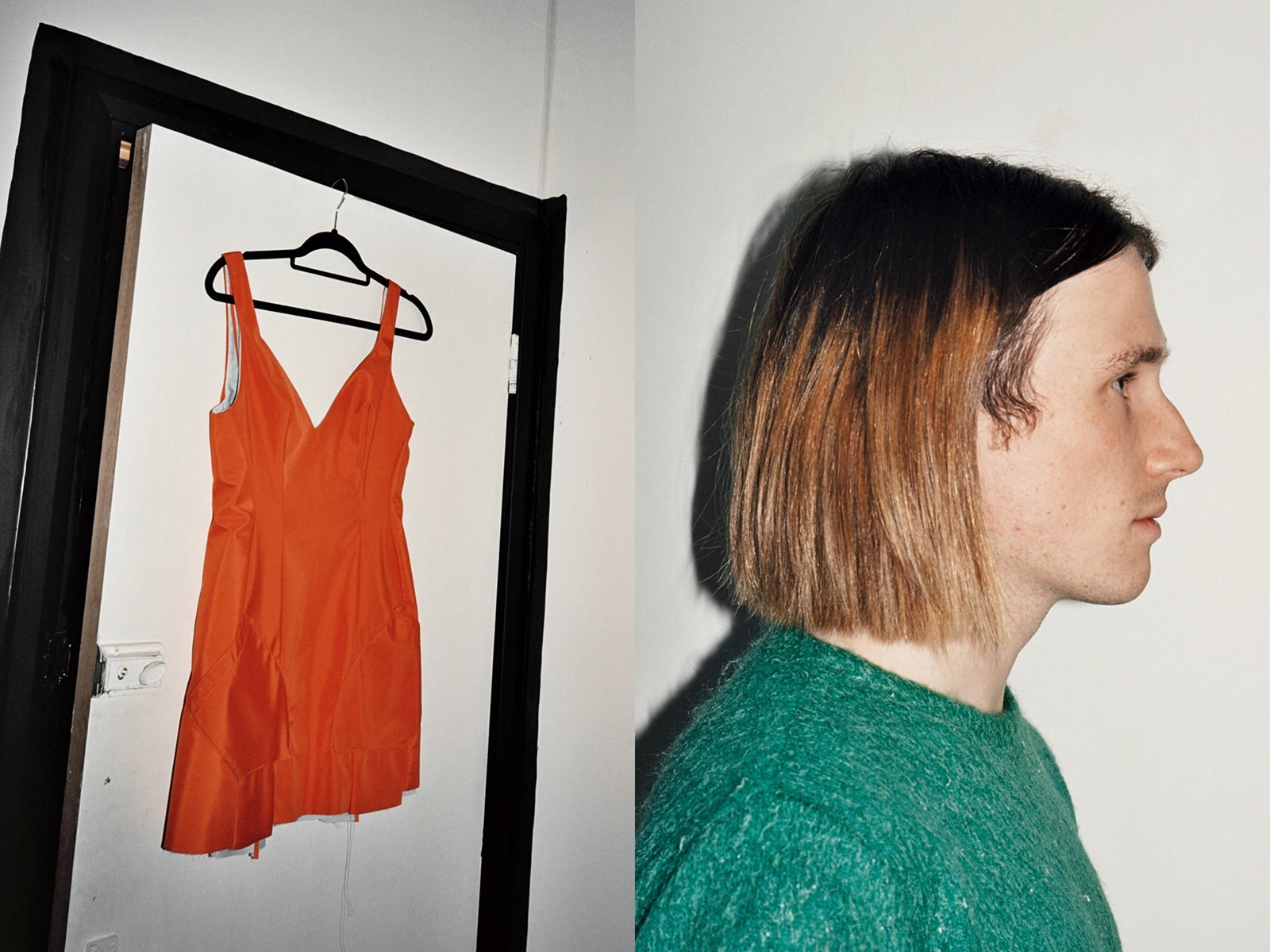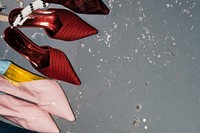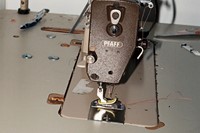It is the day before Richard Malone’s first season showing on schedule at London Fashion Week, but you wouldn’t know it. He is remarkably calm, and his aesthetic – one of couture techniques transformed into structural yet wearable garments – feels strangely familiar. Since his debut collection last season, he has been featured in the pages of AnOther Magazine, been worn by Lorde for Dazed, appeared in Vogue; Garage; Love. Before even making his way onto the official roster, he’s become some sort of industry darling, his affable Irish charm paired with considered and extraordinarily constructed pieces seemingly irresistible.
One would assume that this kind of attention so early in a designer’s career would be both empowering and overwhelming, but Malone seems relatively unphased: his focus isn’t on commercial success. “People always give me advice on how to make the business grow really quickly with like, a logo tee, or a branded jumper or something,” he explains at his studio days before the show. "It’s just not me; it just doesn’t feel honest. The women who buy my clothes want them to be special, want them to be original, want something different. Those women have been like my patrons, and I have such a level of respect for them. For me, it’s about keeping them interested – and they’re not easy to keep interested!”
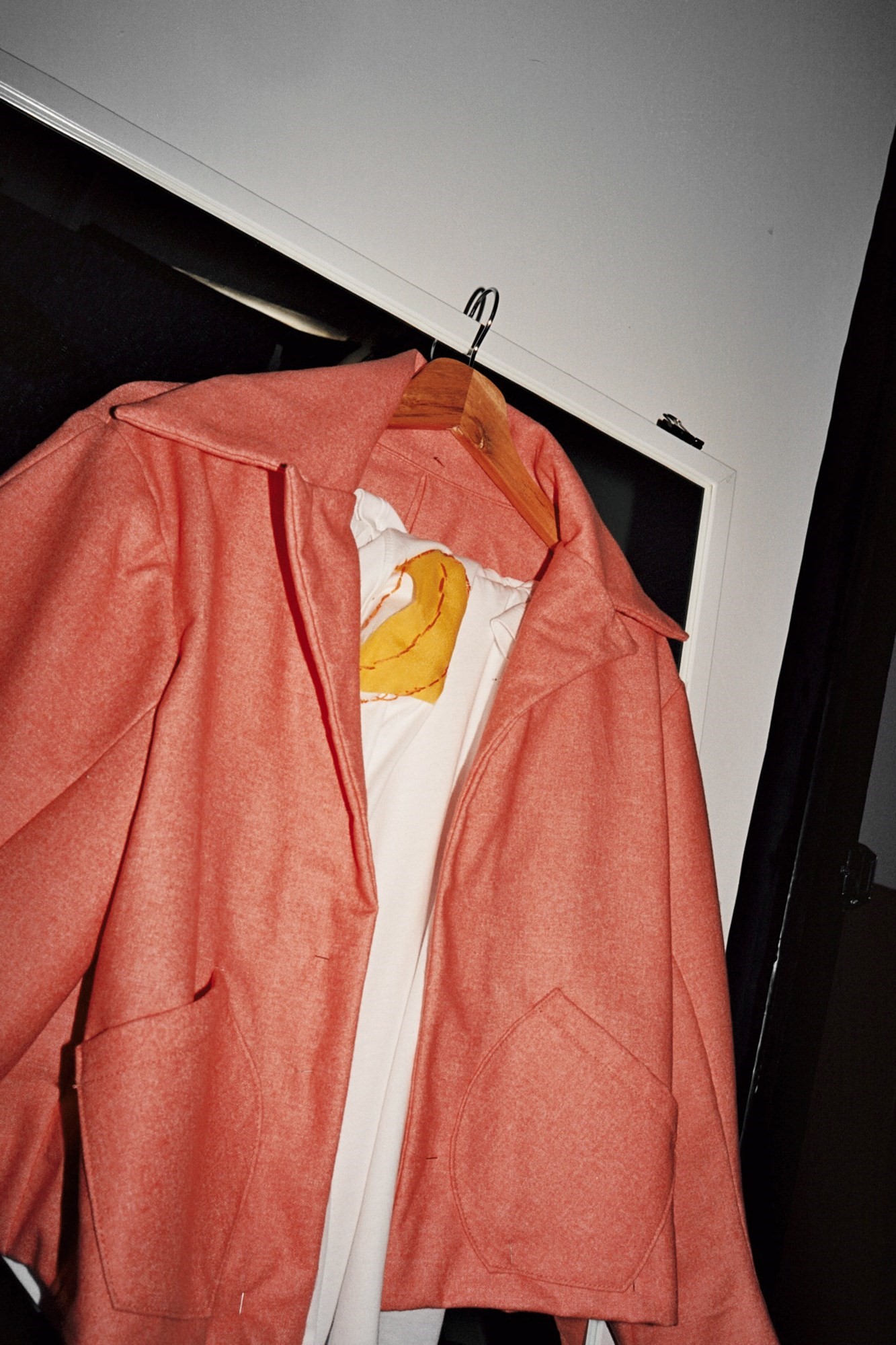
This is how Malone has built his brand thus far: quietly, unassumingly, visiting the houses of the sorts of women who will spend a few thousand pounds on a made-to-measure, limited-edition piece. They make him presents of designer handbags out of their closets and he asks if he can return them to pay his rent. It’s a funny situation, and he’s already got appointments booked with them immediately following his show – even going back to Ireland to visit some in their homes before he attends the Paris showrooms for the first time. “These are the women that the major luxury brands are targeting, but they’re failing miserably,” he says. “It’s all so branded, all about the label. They don’t want that, they want something different. Things that will actually look good on them, will fit them properly, that they can just pull on and don’t have to dry-clean. Wait, the ceiling is leaking. Let me just put this plant under it, it’ll be happy there.”
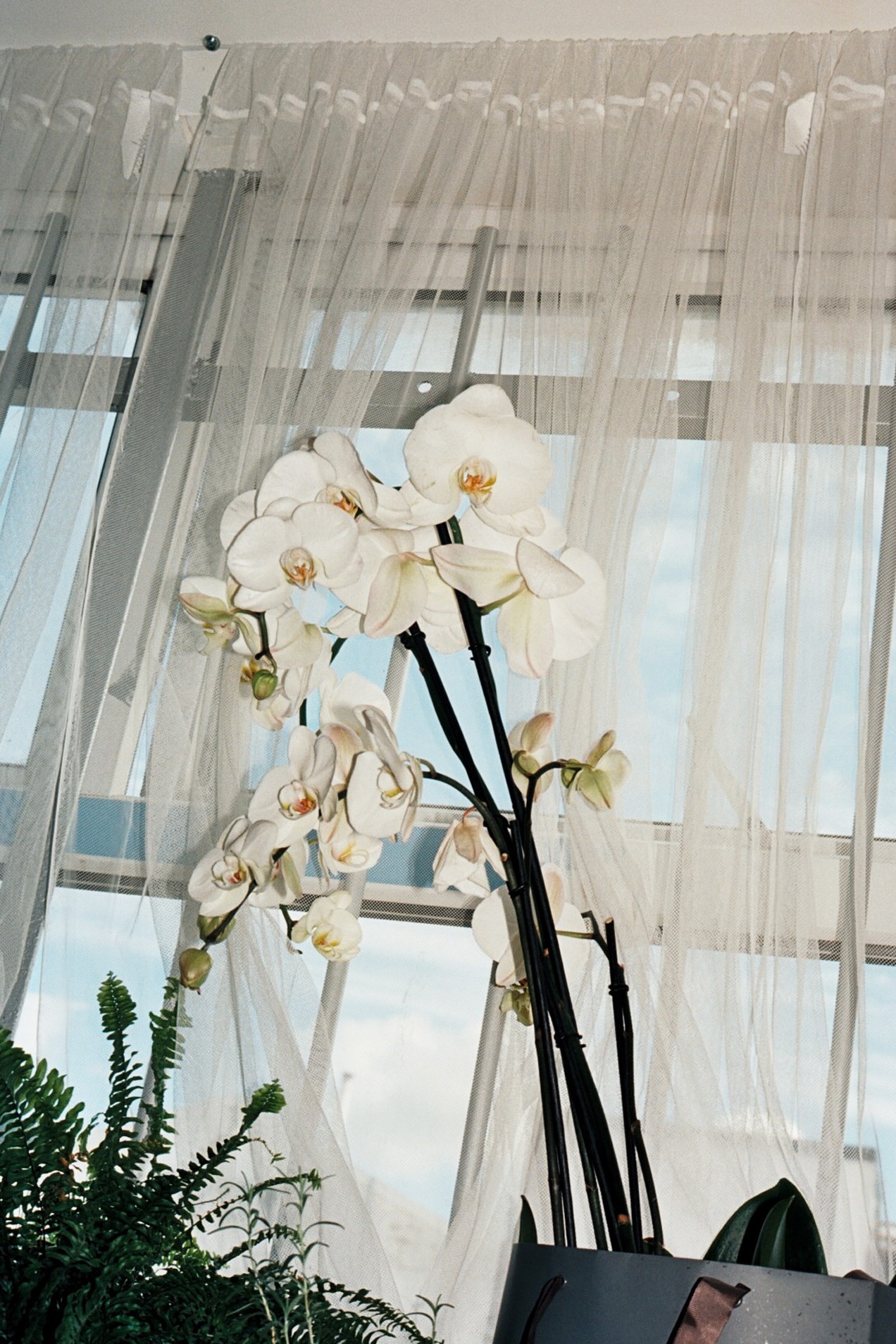
This season is the first time that Richard Malone has made a Spring/Summer collection; the previous have all been comparatively heavy duty – lined and puffed and woollen. This might be a result of his heritage; he hails from Wexford in Ireland, a small town where it can’t often be all that sunny. It’s a town that crumbled under the weight of the recession – both of Malone’s parents lost their jobs, and he was left with the surplus paint from the construction work that he did with his father. “They were all these gross, opaque colours,” he remembers. “They would have just gone to waste because there was literally no work anywhere in Ireland at the time. I thought that someone better do something with it, so I did. My approach to material is quite informed really from being on building sites for years; I’m like a magpie when I see certain things.”
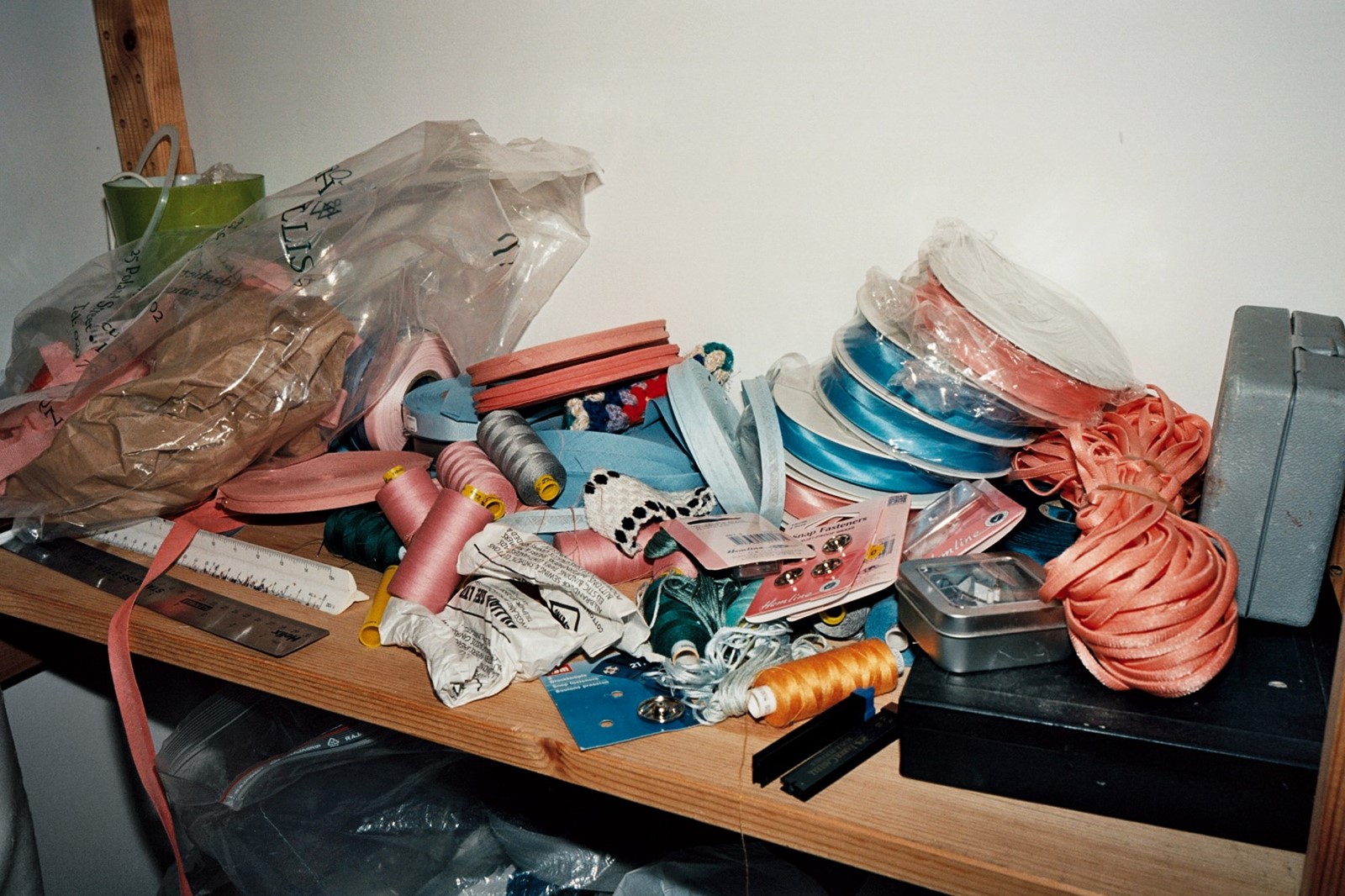
Then, when he had to take out a bank loan to fund his degree at Central Saint Martins (Irish citizens don’t qualify for student loans), he had to use whatever he could get his hands on to make his graduate collection. It ended up being a lot about a lime green pleather that he found in a warehouse in Hackney, one which sells or incinerates waste fabric. A full roll cost £160. The whole collection cost £600. This make-do-and-mend approach still permeates the S/S16 collection: the blush-pink wool sourced from “somewhere up North,” the showpieces made from the toiles of the other dresses. “With pieces like that, we’ll only produce four or five, because that’s all the fabric we have. It’s nice for the women who buy them, because they want to know that there’s only a few of them.”
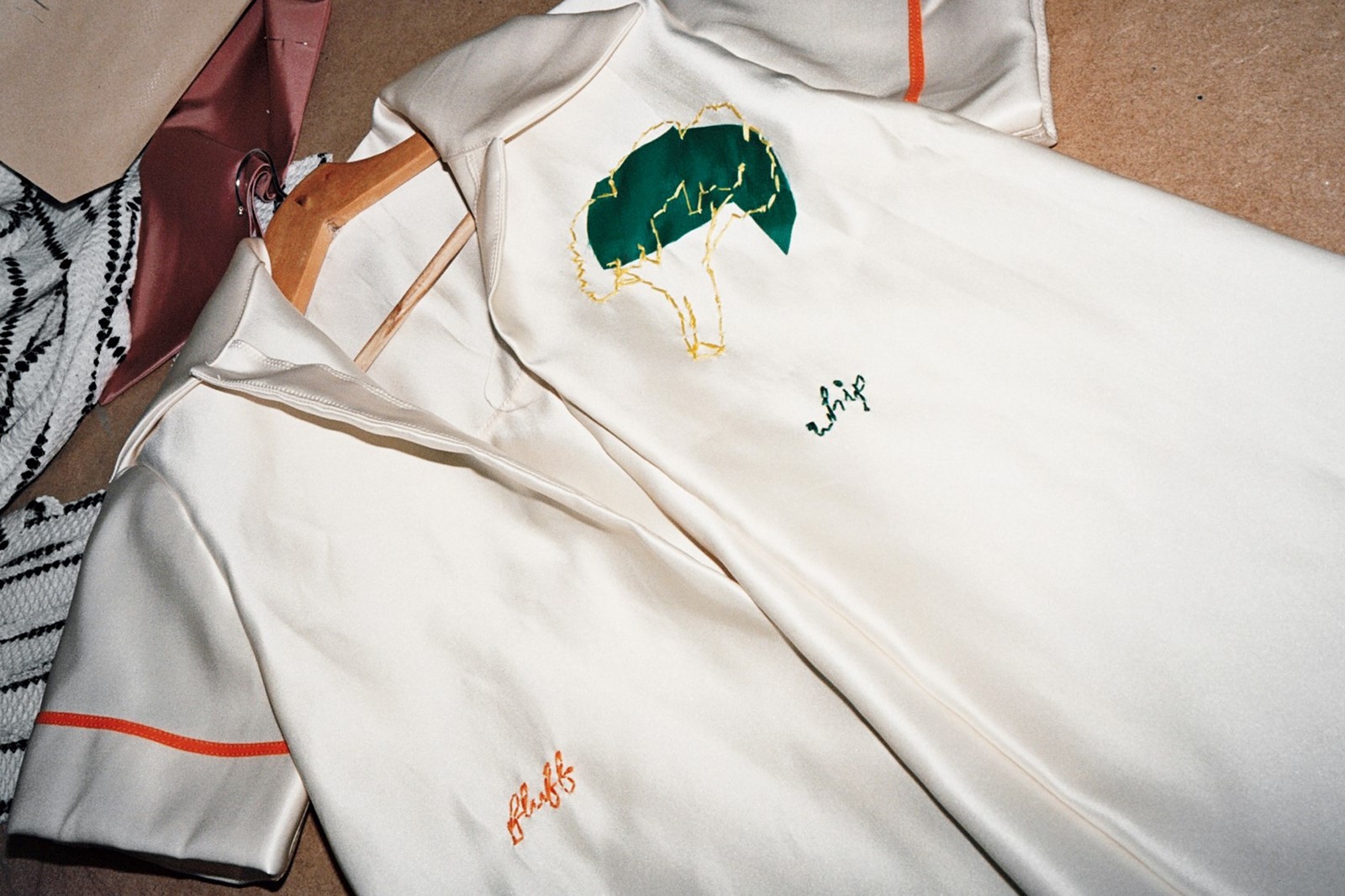
Malone’s references heavily draw on his upbringing; for S/S16, hand-embroidered vegetables and epithets were taken from a cookbook handed down from his grandmother to his mother when she got married – “because that’s what she’d be doing as a married woman, making the broccoli.” So precious is the cookbook to the family that he has to request pictures of it from his mother – apparently it can’t leave the kitchen cupboard. The shirts in the collection are inspired by those his mother wore to work in Argos, where women were required to wear a full face of (shimmery but neutral) makeup, a bootcut trouser and a slight heel. Men are not subject to the same uniform strictures; “it’s one of the reasons I love going back to Wexford,” Malone explains. “Those gender differences seem so obvious there, and then when I come back to London I see them play out here in different ways.”
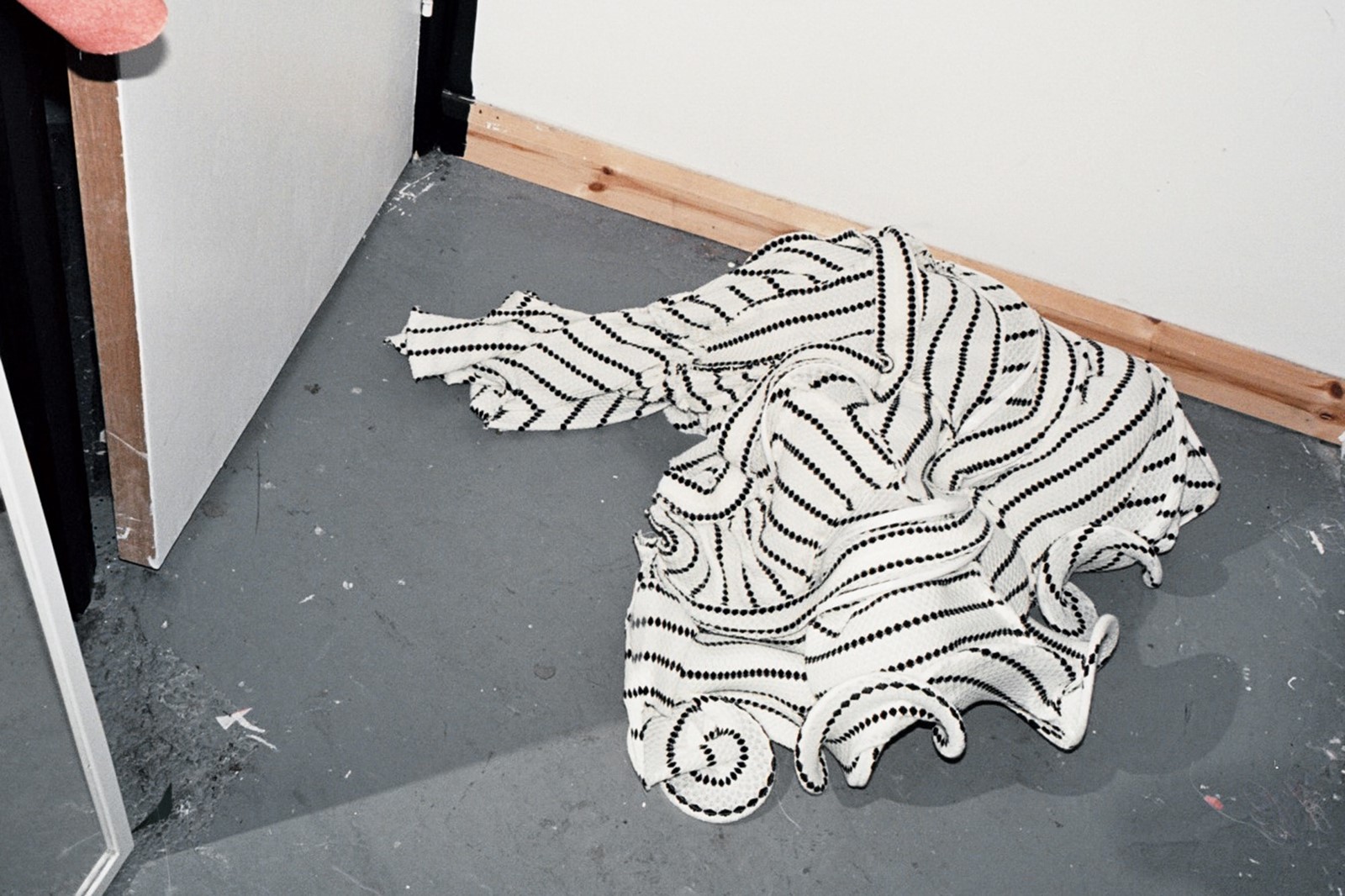
This preoccupation with gender tropes permeates every level of Malone’s collection; whether through its subversive, sickly hues or its creative tailoring. Pockets are a regular feature (“a woman can’t keep anything in a Dior clutch, who are they making them for?” he once asked me), fabrics are wipe-down nylons or thoroughly waterproof (scraps courtesy of a yachting manufacturer). Showpieces can be chucked into a washing machine rather than requiring drycleaning, their intricate construction meaning that they pop back into place on a drying rack. “I hate when you see a label and it says ‘do not wash’. Jesus, you might as well buy a dress made of cardboard.” And, with each piece fitted to the street-cast models who will be wearing the collection tomorrow, they accommodate a range of body shapes and sizes – “it’s so easy to make something look nice on a skinny white girl,” he says; and his collaboration with Alice Neale, who has documented his fitting process, means that they have reached out to a broad range of women from artists to solicitors to be a part of his design process.
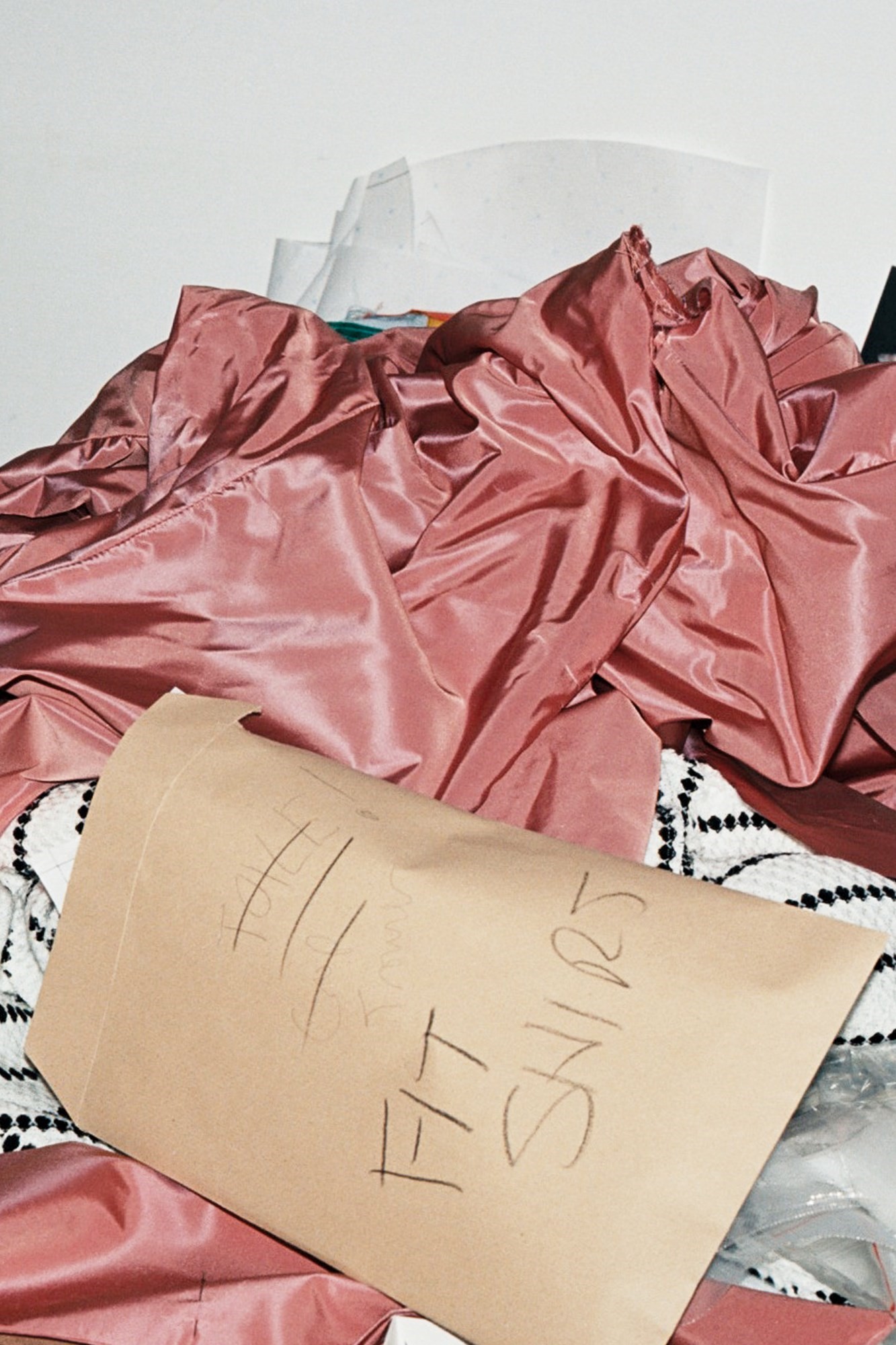
But, while Malone has a thorough understanding of his aesthetic and inspirations, his formal entry into the more bureaucratic side of the fashion industry is through the Fashion East initiative that is now supporting him. “It’s an amazing confidence boost,” he explains. “But it’s also incredibly helpful; I know nothing about so much of this stuff. PR, press… they have that sorted. Health and safety risks that might come up at the venue. And Lulu [Kennedy] comes to the studio sometimes, just to give some words of encouragement. To be able to have those conversations with people changes your perception of what you’re doing, and it makes it more real. It’s bizarre to me. When it comes to the show, I’m going to get pissed. It’s going to be great; Topshop are doing the drinks.”
